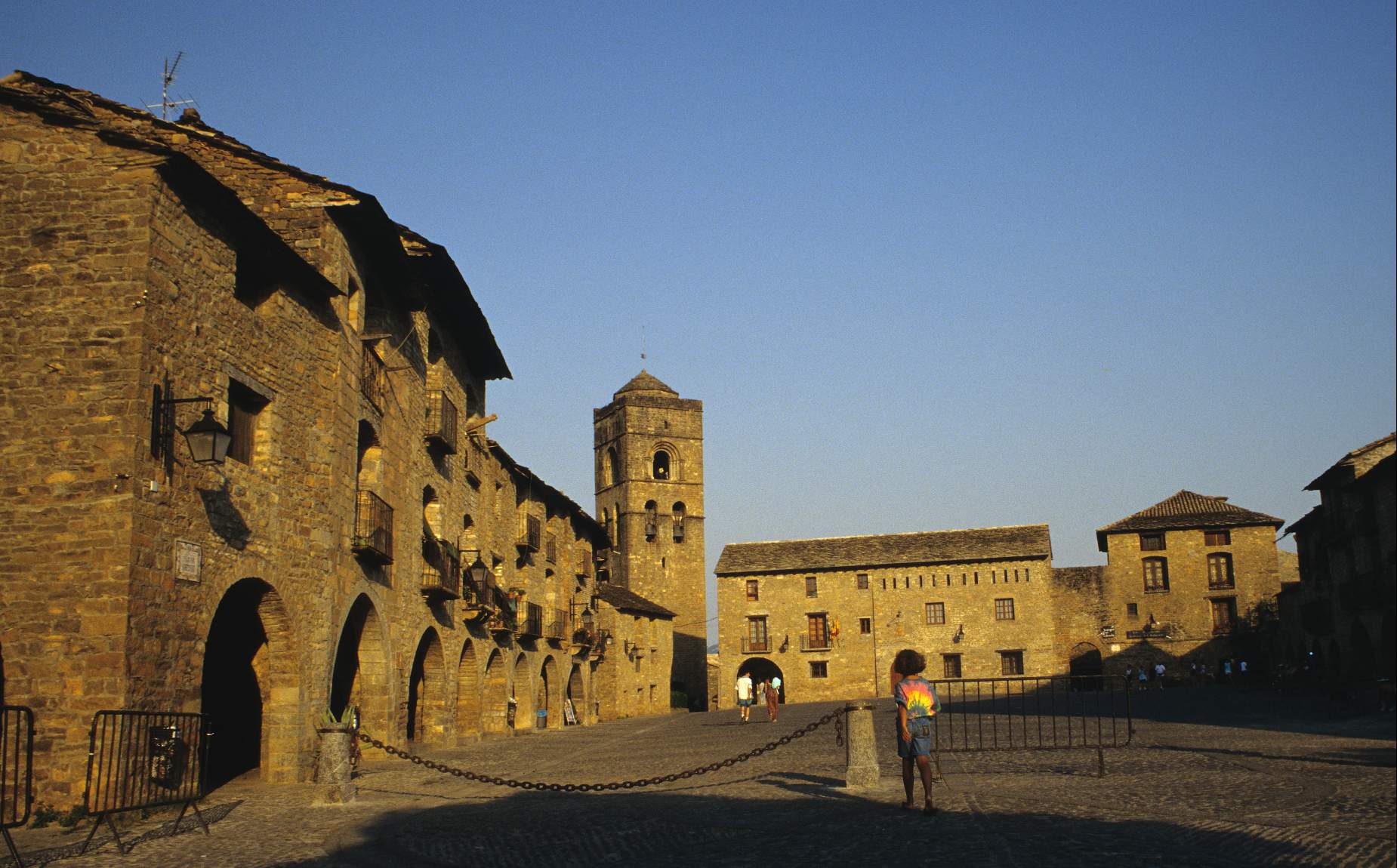Cultural heritage
A meeting of cultures
The imprint of its people on the landscape
Since prehistoric times, the people who have inhabited Sobrarbe have left their indelible mark on this beautiful territory, establishing a harmonious relationship with the natural environment. Different cultures have been weaving, for centuries, a rich and varied cultural substratum that we enjoy today through the numerous samples that make up this beautiful and diverse landscape.
Romanesque in the Sobrarbe-Pyrenees Geopark
We will find numerous examples of Romanesque architecture in any corner of the Geopark such as small hermitages and churches, but also military constructions such as castles and towers or medieval ensembles, such as the town of Aínsa.
San Victorián Monastery
Undoubtedly a reference in the history of the Sobrarbe region that can be visited with a guide all year round. According to some experts, it is considered the oldest in Spain since its origin dates back to the Visigothic period, in the 6th century. More information for your visit at: The Monastery of San Victorián was protected by kings and popes and for centuries was configured as the political, economic and spiritual center of Sobrarbe, also having control over localities of Ribagorza, Somontano and even had possessions in Valencia. It is the Royal Pantheon, where the tombs of Gonzalo I and Iñigo Arista are preserved. The carved wooden choir stalls of the old choir loft were transferred to the church of Boltaña, where they can be visited. Following in the footsteps of San Victorián, you can follow the route from the Monastery to the hermitage of La Espelunca, an easy and beautiful geo-route where legends, tradition and reality are mixed to give rise to one of the most popular places in the Geopark where the saint lived in the 6th century. The hermitage is located in a hollow in the foothills of the Peña Montañesa, perfectly blended into the environment. Along the route we will see several geological aspects that will help to understand the spectacular relief of the Peña Montañesa. Difficulty: Low Length: 5 km (round trip) Difference in altitude 280 m.
Geopark Villages
In the Sobrarbe-Pyrenees Geopark, we can contemplate excellent examples of popular architecture in mountain villages in the Pyrenees (Torla-Ordesa, Broto, Fanlo, Buerba, Lecina or any of the villages in the Chistau Valley), in their chimneys, doors, lintels, door knockers, etc. Also strong houses, but which integrate outstanding defensive or artistic elements. Or numerous examples of constructions associated with daily tasks, agricultural and livestock work: barns, wineries, blacksmiths' shops, mills, etc. But in Sobrarbe-Pyrenees you can also admire magnificent historic-artistic sites such as the town of Ainsa, or the old town of Boltaña.
Festivals and traditions
Sobrarbe celebrates throughout the year numerous festivals and traditions that have been maintained throughout history, standing out for their originality or for their important ethnological or anthropological interest and that allow visitors to enjoy moments of joy, celebration and fun with their people, in their villages. - Carnival. In February, many towns in Sobrarbe (Bielsa, Torla-Ordesa, Nerín, Valle de Chistau, La Fueva, etc.) have preserved a large part of this tradition through carnival characters and symbols that are clearly maintained despite the adaptation to new times. In all of them the important thing is to have fun, dance and enjoy the magic of Carnival. - Falleta of San Juan de Plan. It is celebrated on the night of San Juan. It is one of the manifestations that are part of the Fires of the summer solstice in the Pyrenees, well inscribed on the Representative List of Intangible Cultural Heritage of UNESCO. - The descent of the "navatas" down the Cinca River. It is one of the manifestations that are part of the fluvial transport of wood, Timber Rafting, inscribed in the Representative List of the Intangible Cultural Heritage of UNESCO and is an Activity of Tourist Interest of Aragon. On the third Sunday of May, the nabatas travel along the Cinca River from the Escalona-Laspuña bridge to Aínsa. - Morisma of Ainsa. On the last weekend of August in even-numbered years, this medieval theatrical performance is held in the main square in Ainsa, with the participation of the inhabitants of Sobrarbe (250 actors), representing the legendary victory of King Garcia Ximenez over the Muslims in the 8th century, thanks to the appearance of a cross on a holm oak tree. This performance has been passed down from generation to generation and dates back to 1678. It has been declared a Festival of Tourist Interest in Aragon. - Tricks of Valle de Chistau. For San Antón, January 17, during the whole night of the eve, the neighbors of Valle de Chistau go around the villages of the valley ringing shearing shears and cowbells. - The winter bonfires. January is the month of bonfires and is celebrated the night before, San Victorián (January 12, Aínsa), San Antón (January 17, Aínsa), San Sebastián (January 20, Aínsa, Tierrantona, Labuerda?), San Pablo (January 25, Boltaña). No bonfire lacks a bottle of wine, a grill where to roast sausage or other food and neighbors with whom to talk and laugh and sometimes there is also a guitar and someone to liven up the evening with songs. These cold winter nights around the bonfire have all the ingredients to become a party.







